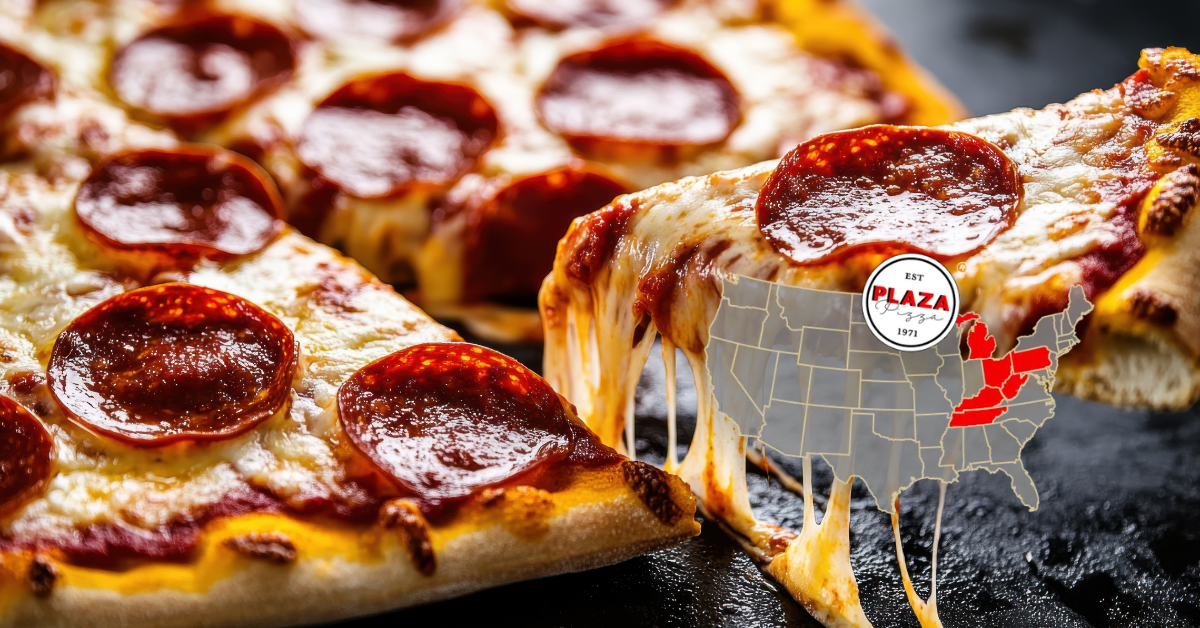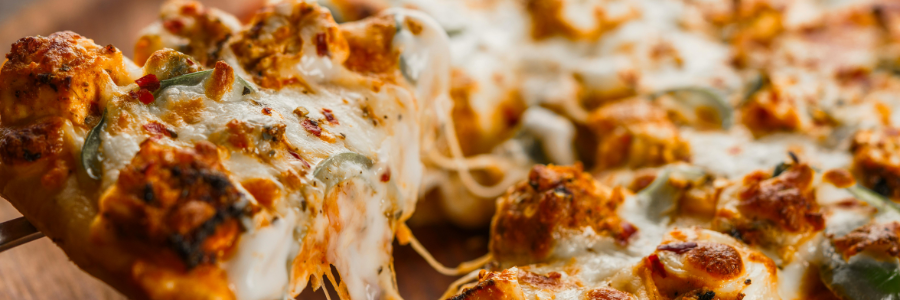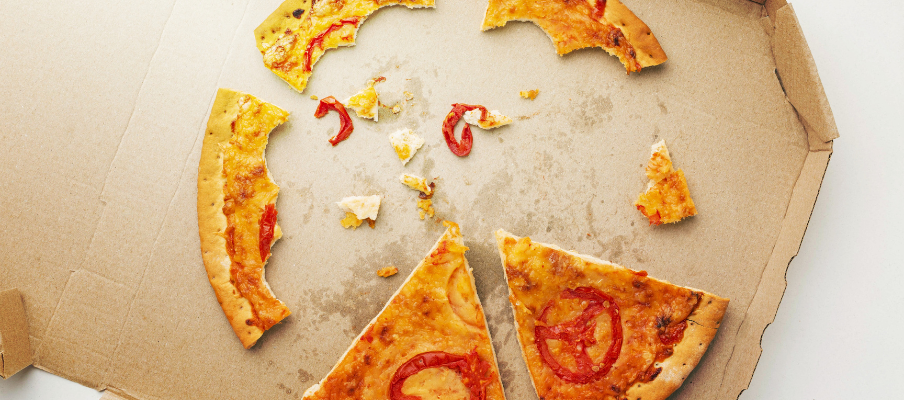How to make Pizza Crust crispy?
Understanding the Basics of Crispy Pizza Crust
Importance of Dough Hydration
Dough hydration is key to achieving a crispy pizza crust. When the dough has the right amount of water, it helps create steam during baking, which makes the crust puff up and become crispy. Too much water can make the dough soggy, while too little can lead to a dry crust.
Role of Oven Temperature
The temperature of your oven plays a huge role in how crispy your pizza crust turns out. A hotter oven helps to cook the crust quickly, sealing in moisture and creating that perfect crunch. Here are some tips for oven temperature:
- Preheat your oven to at least 475°F (245°C).
- If using a pizza stone, let it heat for at least 30 minutes.
- Avoid opening the oven door too often, as this can lower the temperature.
Choosing the Right Flour
The type of flour you use can greatly affect the texture of your pizza crust. For a crispy crust, consider these options:
- Bread flour: Higher in protein, which helps develop gluten for a chewier texture.
- All-purpose flour: A good balance for a crispy yet tender crust.
- 00 flour: Ideal for Neapolitan-style pizza, giving a light and crispy finish.
Plaza Pizza knows that understanding these basics is essential for making the best pizza in Ohio. With the right techniques, you can create the best thin crust pizza near me that everyone will love!
Techniques for Preparing the Dough
Kneading for Gluten Development
Kneading is a crucial step in making pizza dough. It helps develop gluten, which gives the crust its structure and chewiness. Knead the dough for about 10 minutes until it becomes smooth and elastic. Here are some tips for effective kneading:
- Use a clean, floured surface to prevent sticking.
- Fold the dough over itself and push down with the heel of your hand.
- Rotate the dough a quarter turn after each push to ensure even kneading.
Fermentation and Proofing
Fermentation is when the dough rises and develops flavor. This process can take several hours or even overnight. Proofing is the final rise before baking. Here’s how to do it:
- After kneading, place the dough in a bowl and cover it with a damp cloth.
- Let it sit in a warm place until it doubles in size.
- Punch it down gently to release air before shaping.
Using a Rolling Pin vs. Stretching by Hand
When it comes to shaping your pizza crust, you can either use a rolling pin or stretch it by hand. Each method has its benefits:
- Rolling Pin: Gives a uniform thickness and is easier for beginners.
- Stretching by Hand: Creates a more rustic look and can help keep air bubbles in the crust for a lighter texture.
Remember, the way you prepare your dough can greatly affect the final result. At Plaza Pizza, we believe that taking the time to perfect your dough will lead to a deliciously crispy pizza crust.
Baking Methods for a Crispy Crust
Using a Pizza Stone or Steel
Using a pizza stone or steel is one of the best ways to achieve a crispy crust. These tools help to evenly distribute heat and absorb moisture from the dough. Here are some tips:
- Preheat the stone or steel in the oven for at least 30 minutes before baking.
- Place the pizza directly on the hot surface for a better crust.
- If you don’t have a stone or steel, a baking sheet can work, but it may not be as effective.
Preheating the Oven
Preheating your oven is crucial for a crispy pizza crust. A hot oven helps to cook the dough quickly, preventing it from becoming soggy. Follow these steps:
- Set your oven to the highest temperature, usually around 475°F to 500°F.
- Allow the oven to preheat for at least 30 minutes.
- Use an oven thermometer to ensure the temperature is accurate.
Baking Time and Temperature
The right baking time and temperature can make all the difference. Here’s what to keep in mind:
- Bake your pizza for about 10-15 minutes, depending on the thickness of the crust.
- Keep an eye on the pizza; it should be golden brown and bubbly.
- If you want to know how to reheat pizza, remember that a hot oven is key to keeping the crust crispy.
A crispy pizza crust is all about the right tools and techniques. With the right methods, you can enjoy a delicious pizza just like at Plaza Pizza!
Tips for Enhancing Crispiness
Adding Olive Oil to the Dough
Adding a bit of olive oil to your pizza dough can make a big difference. It helps create a nice, crispy crust. Just a tablespoon or two mixed in can do wonders!
Incorporating Semolina or Cornmeal
Using semolina or cornmeal on your pizza peel or baking surface can help prevent sticking and add extra crunch. Here’s how to use them:
- Sprinkle a thin layer on your baking surface before placing the dough.
- Mix a small amount into your dough for added texture.
- Use it as a coating for the bottom of the crust.
Using a Thin Layer of Sauce
Too much sauce can make your crust soggy. To keep it crispy, try these tips:
- Spread a thin layer of sauce evenly across the dough.
- Avoid putting sauce all the way to the edges.
- Consider using a thicker sauce to reduce moisture.
Remember, a crispy pizza crust is all about balance. With the right techniques, you can enjoy a deliciously crunchy pizza every time!
At Plaza Pizza, we believe that the perfect crust is the foundation of a great pizza. By following these tips, you can enhance the crispiness of your homemade pizza and impress your friends and family.
Common Mistakes to Avoid
Overloading with Toppings
Adding too many toppings can weigh down your pizza crust, making it soggy instead of crispy. Here are some tips to keep in mind:
- Limit the number of toppings to two or three main ingredients.
- Use lightweight toppings like fresh vegetables instead of heavy meats.
- Spread sauce thinly to avoid excess moisture.
Not Preheating the Oven
Failing to preheat your oven can lead to a disappointing crust. To ensure a crispy base:
- Preheat your oven for at least 30 minutes before baking.
- Use a pizza stone or steel to retain heat.
- Check the temperature with an oven thermometer for accuracy.
Using Cold Dough
Cold dough can hinder the rise and texture of your crust. To avoid this mistake:
- Let your dough sit at room temperature for at least 30 minutes before rolling.
- Warm dough helps in achieving a better rise and crispiness.
- Always cover the dough to prevent it from drying out.
Remember, making a great pizza crust takes practice. Avoiding these common mistakes will help you create a delicious, crispy pizza that everyone will love. Plaza Pizza knows that a perfect crust is the foundation of a great pizza!
Experimenting with Different Recipes
When it comes to making pizza, trying out different recipes can lead to exciting results. Each style has its own unique flavor and texture, making it fun to explore. Here are some popular types to consider:
Neapolitan vs. New York Style
- Neapolitan Pizza: This classic style is known for its soft, chewy crust and simple toppings. It’s usually cooked at a high temperature in a wood-fired oven.
- New York Style Pizza: This version has a thicker, crispier crust that can hold more toppings. It’s often sold by the slice and is great for on-the-go eating.
Gluten-Free Options
- If you or someone you know has gluten intolerance, there are many gluten-free pizza crust recipes available. These often use alternative flours like almond or rice flour.
- Experimenting with different gluten-free flours can lead to tasty results!
Whole Wheat Crust Variations
- Whole wheat flour can add a nutty flavor and extra nutrients to your pizza. It’s a healthier option that still tastes great.
- You can mix whole wheat flour with all-purpose flour for a balanced crust.
Trying out different recipes not only enhances your pizza-making skills but also allows you to discover new flavors that you and your family will love. At Plaza Pizza, we encourage everyone to get creative in the kitchen!
Tools and Equipment for the Perfect Crust
When it comes to making a crispy pizza crust, having the right tools can make a big difference. Investing in quality equipment can elevate your pizza-making experience. Here are some essential tools you should consider:
Pizza Peels and Their Uses
- Wooden Peels: Great for transferring raw pizza to the oven.
- Metal Peels: Ideal for removing the pizza once it’s cooked.
- Size Matters: Choose a peel that fits your oven and pizza size.
Choosing the Right Baking Surface
- Pizza Stones: They absorb moisture and help create a crispy base.
- Pizza Steel: Heats up quickly and retains heat well for a perfect crust.
- Baking Sheets: Can be used in a pinch, but may not give the same results.
Investing in a Quality Oven
- Convection Ovens: Circulate hot air for even cooking.
- Pizza Ovens: Specifically designed for high temperatures, perfect for crispy crusts.
- Temperature Control: Ensure your oven can reach at least 475°F for best results.
Having the right tools not only makes the process easier but also enhances the quality of your pizza. Plaza Pizza knows that the right equipment is key to achieving that perfect crispy crust.
Final Thoughts on Achieving Crispy Pizza Crust
In conclusion, making a crispy pizza crust is all about the right techniques and ingredients. Start with a good dough recipe and let it rise properly. Use a hot oven and a pizza stone if you can, as these help create that perfect crunch. Don't forget to pre-bake your crust for a few minutes before adding toppings. With these tips, you'll be able to enjoy delicious, crispy pizza at home. So gather your friends and family, and have fun making your own pizzas!







